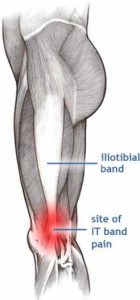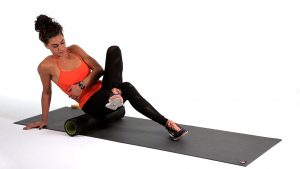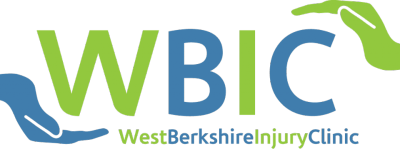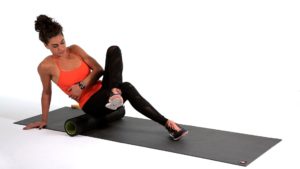 The ITB – source of many nightmares for runners, cyclists and active people. So, why is it there and why does it cause so much problems and pain!
The ITB – source of many nightmares for runners, cyclists and active people. So, why is it there and why does it cause so much problems and pain!
I did a brief Facebook live on this subject last week and I covered some of the elements.
Basically the ITB is there to stabilise the knee along with the knee ligaments and is just a band of tissue that runs from your hip down to your shin bone (Tibia).
So what causes ITB pain:-
There are a number of causes however only really occurs in active people rather than the active:-
- Long Distance Runners – Overtraining
- Poor Biomechanics in the lower leg
- For Cyclists – Incorrect Bike setup.
- Poor Flexibility.
- Weakness in the muscles around the hip.
There are other causes but these are the main causes.
So what can you do to prevent issues with the ITB. Now! I’m using this to state something which I hear a lot and see online – You can’t prevent issues happening you can reduce the risk but you can’t prevent…
Okay! So what can I do to reduce the risk?
Runners:
Key Point 1 – Don’t overtrain. Running 5 consecutive days/week is potentially going to cause issues. Remember that rest is as important as the training. Talk to somebody – myself, there are a number of running groups with expert coaches who can advise. As well as the long runs build in some interval training, cross training, strength and conditioning AND REST!!!!
Cyclists:
It has been seen that cyclists will develop ITB issues however quite often is because your bike is not set up appropriately which can cause muscle imbalances which then bring on the ITB issues. Get a bike fit done by a properly qualified person who will listen to your concerns, not just rely on technology but use his experience and understand the bike that you are riding.
For Everybody:
Stretching:
Stretching is important for anybody who is exercising but with ITB issues it is important to stretch. But what do you stretch and should you foam roll?
The muscles that you should stretch are your quads, glutes, hamstrings. There are quite a lot of videos available which show how to stretch those muscles but a good coach will explain.
If you see me before/after a parkrun or if you don’t want to wait until then (It’s been a while since I’ve parkrunned) and if there is a lot of interest I will do a quick and free stretching workshop for people at my clinic room in London Road.
Foam Rolling:
So I’m going to tell you to foam roll your ITB? Nope – Never – Do not do!
To increase the length of the ITB by 1% you need to use > 9075 N/cm² which is the equivalent of 925kg per square cm. A therapist will apply the equivalent of 3.4Kg per square cm and you’re not going to be able to do this either by putting pressure through a foam roller. Its just going to cause a lot of pain.
But foam rolling does help to work alongside your stretching regime. Foam roll your glutes, quads, hamstrings, and your calf muscles. When you foam roll your glutes you can foam roll of the main glute max by just sitting on the foam roll and roll away however the gluteals are a big muscle group. So you need to foam roll both parts – see the pictures below:-


Strengthening.
I’ve said before and I will continue to say this – stretching is quite often not enough as my colleague Danny Clayton says if you stretch, stretch and stretch again but there is no improvement you probably didn’t need to stretch. What is important is you need to strengthen the muscles as well.
To reduce the risk I would strongly suggest strengthening your glutes, hamstrings and quads. This can be done using lunges and squats however there are little amendments you can do:-
Tilt your pelvis up before doing a lunge and that will activate your glutes.
Other exercises can include glute bridges, hamstring bridges, Jane Fondas and clams.
For more info, take a look at our video below.
https://www.facebook.com/WestBerkshireInjuryClinic/videos/2031331120217698/

